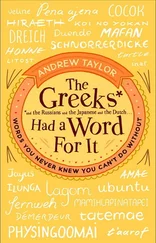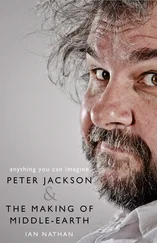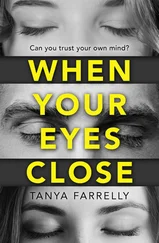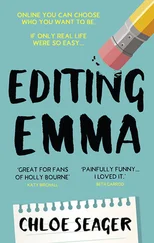Tellingly, in terms of the influence Walsh has had on the trajectory of both their careers, it had begun as her passion project. Jackson hadn’t even heard of the real-life murder case, and worried at first that the story was too grim to make a satisfying film.
In 1952, two New Zealand schoolgirls, more than a little emotionally maladjusted, fell into an intense friendship that spilled into a mania for one another. Their relationship was like an addiction. Threatened with separation, they conspired to literally dash the brains out of one of their mothers with a brick. For all the bloody mayhem of his career, this remains the most disturbing sequence Jackson has ever filmed. The shift in mood and moral accountability from Braindead is astonishing. They had shot in the footsteps of the actual scene of the crime in Christchurch’s Victoria Park. In truth, a few hundred feet further along the wooded path after Jackson had become unnerved by a lack of birdsong at the exact murder scene.
The Pauline Parker-Juliet Hulme case shook the stiff veil of propriety that 1950s New Zealand had inherited from Britain. In fact, it tore it down. This was the scandal of its day, portrayed in lurid, tabloid details by the excited papers and true crime accounts; there was even a novel. Author Angela Carter had written a screenplay inspired by the events called The Christchurch Murder , which Walsh had read. When she and Jackson were developing the idea, two rival film projects were already underway: one produced by Dustin Hoffman, the other to be directed by fellow New Zealander Niki Caro ( Whale Rider ).
What makes the Jackson-Walsh script so evocative is the decision to concentrate on the friendship rather than the sensationalist furore of the court case. They were two schoolgirls, barely sixteen, with hints of lesbianism to their unnatural bond — until 1973 homosexuality was still considered a mental malady in New Zealand. However, Hulme (who as an adult was later revealed to be crime author Anne Perry) flatly denied this was so.
Jackson and Walsh strove to interpret what lay behind this dangerous dependency. Individually, Parker and Hulme may have grown into functioning members of society. Together some moral constraint went missing, as if they were spurring each other on, waiting for one or the other to say no.
Scrupulous in their research, Jackson and Walsh burrowed like detectives into the cuttings and court transcripts; dialogue was lifted verbatim from Pauline’s florid diary entries.
‘The way they worked together was an incredible thing to see,’ said Melanie Lynskey, who as dumpy, brooding Pauline witnessed the Jackson-Walsh double act at first hand. It was a true creative partnership, the distinctions of writer and director far less defined than the credits suggest.
Here was a clear signal of the maturity they would bring to Tolkien: the concentration on character, the unhurried but intent building of story and the way in which the camera became a participant in their fantasies. The Parker-Hulme friendship also crossed class boundaries, a theme explored to a more positive outcome with Frodo and Sam.
Here too was Jackson and Walsh’s growing felicity for casting. Neither had done any significant acting, and this would be an astonishing exercise in sustained hysteria. Walsh discovered Lynskey at a Christchurch high school near to where the real girls first met. She was looking for someone who in any way resembled Pauline.
‘This girl really loves acting,’ her teacher had said, pointing out Lynskey. ‘She puts on plays that nobody wants to see.’
For the superior, pretty fantasist, Juliet — who had lately arrived from England — Jackson had plucked an unknown British girl from Reading from 600 hopefuls. Kate Winslet had been working in a delicatessen when the call came.
‘I’ll never forget it as long as I live … I actually fell on my knees,’ she admitted. Within four years Winslet would be one of the most famous faces on the planet, star of James Cameron’s Titanic .
Here too is the promise of a cinematic New Zealand being unveiled: the unique light; the vast, primordial landscape; and the confidence with which the local crew rose to the challenges set before them by their ambitious director.
Perhaps most significantly, Jackson would inaugurate a new digital division of his and Richard Taylor’s special effects house, Weta (named after a local cricket-like bug 1), in order to create the abstract world of the girls’ flowering imaginations. Key to understanding Hulme and Parker’s descent into murder is the film’s ability to slip inside the sickly dreamspace of their conjoined imaginations. A similar sympathy for the devil would be applied to the depiction of Gollum (over which Walsh would have a significant influence).
Between them, the girls invented their own fantasy world. Borovnia would become more meaningful than reality: they traced royal lineages back over the centuries and wrote melodramatic adventure stories set within its colourful bounds, thirteen novels’ worth. They dreamed of having them adapted into big Hollywood movies starring tacky 1950s heartthrob Mario Lanza. Movie mad, we catch them watching Orson Welles in The Third Man , and Jackson does a brief rendition of noir in its honour. The resonances — and ironies — are there for all to see.
It was a film about the dangers of losing yourself inside a fantasy world.
Weta was still a single unit at this time. Taylor’s workshop would make the rubber suits for the actors playing the ‘living’ versions of the Plasticene Borovnians the remarkable girls sculpted. Led by George Port, who had worked with Jackson since Meet the Feebles , Weta also ambitiously pursued a series of digital effects shots inspired by the groundbreaking work of Cameron’s Terminator 2: Judgment Day . ‘What the Hell,’ was Jackson’s attitude, ‘let’s try.’ Their computer graphics department boasted a solitary Silicon Graphics SGI computer and a scanner. Which thankfully came with an instruction manual. By post-production on The Two Towers , Weta Digital would boast the largest amount of processing power in the Southern Hemisphere.
There are fewer CGI shots in Heavenly Creatures than is generally recognized. Taylor takes it as a compliment that his prosthetics are mistaken for CGI. The true digital shots were localized to Christchurch’s Port Levy morphing into a too-colourful, too-exquisite ornamental garden, complete with giant butterflies.
Extraordinary for 1994, these digital effects now appear charmingly antiquated, but that somehow makes them more fitting for the strange climate of the film. Jackson was using visual effects to express emotions.
‘And all for a three-and-a-half-million dollar budget,’ announces Kamins proudly. Behind him on his office wall there is a framed poster of Heavenly Creatures , with the girls leaping into a pristine lake, a film that remains not only an early marker of Jackson’s prowess, but a minor classic in its own right.
New Zealand might be a long way from Hollywood, and leagues further from New York, where Miramax resided in the hip Lower Manhattan neighbourhood of Tribeca. However, word soon reached Harvey that this was a significant film. There was a scramble to pick up the American rights, and Miramax’s bullyboy sprang into action, elbowing aside competitors and making entreaties to Jackson. Miramax’s Vice President of Acquisitions, David Linde, was despatched to Wellington to see an early cut. Blown away both by the film and the young director, he reported back to Harvey that something major was growing in New Zealand. Linde has remained a good friend to Jackson ever since.
Harvey, wielding his considerable clout, swiftly acquired Heavenly Creatures for distribution and negotiated a prestigious berth for its world premiere — opening The Venice Film Festival.
Читать дальше












